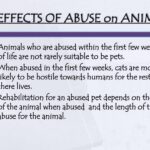In a world punctuated by the cries of helpless creatures and the relentless march of time, understanding the labyrinth of laws surrounding animal cruelty becomes akin to navigating a dense forest; one misstep can lead to despair, while the right path paves the way for justice. This quest for knowledge is critical, for within it lies the foundation of animal welfare. Awareness of legal resources is paramount for those dedicated to eradicating cruelty and fostering a compassionate society. This article aims to shed light on where one may find robust legal frameworks against animal mistreatment, thus empowering advocates to take informed action.
Animal cruelty laws are not a monolithic structure; they ripple through different layers of legislation, from federal statutes to state-specific regulations. Familiarizing oneself with these different tiers is essential to understanding the comprehensive approach needed to combat this vile practice. One must start by perusing the legal framework at the federal level.
The Animal Welfare Act (AWA) stands as a sentinel for animal protection. Enacted in 1966, this pivotal piece of legislation governs the treatment of animals in research, exhibition, transport, and by dealers. However, its scope is limited; the AWA does not cover every animal. As the sun peeks through the branches of our metaphorical forest, understanding the limitations of the AWA allows advocates to see where additional resources might be necessary.
For a deeper dive, online portals such as the Animal Welfare Information Center, hosted by the United States Department of Agriculture (USDA), offer a plethora of information regarding animal welfare legislation. Here, one can uncover guidelines, research papers, and regulations that illuminate the nuances of the AWA and beyond. This hub forms a solid foundation to understand the broader ethical implications of animal treatment.
Transitioning from federal to state law illuminates the diverse patchwork of protection available across the nation. Each state establishes its own statutes that can either bolster or weaken protections for animals. Websites such as the Animal Legal Defense Fund provide an exhaustive overview of state laws, categorizing them in an easily digestible format. They scrutinize felony animal cruelty laws, abandonment statutes, and more, equipping advocates with the necessary tools to engage with their local legal systems. The intricate web of state laws can serve as either a shield or a sword in the battle against animal exploitation.
Furthermore, legal resources such as FindLaw and Justia serve as invaluable consulta for individuals seeking statutory texts, case laws, and legal precedents. These websites allow users to search the vast edifice of legal information by specific topics, including animal welfare. Such platforms can make the complex language of law more accessible, enabling activists to arm themselves with the knowledge needed to confront cases of cruelty, even if the outcome seems shrouded in clouds of uncertainty.
Social media and digital activism have become potent tools in the fight against animal cruelty. Platforms like Twitter and Facebook serve not just as venues for advocacy but also as conduits for information sharing, where up-to-the-minute changes in legislation can be discussed and disseminated. Groups such as the Humane Society and PETA actively keep followers informed of current legal battles and legislative initiatives, urging them to engage with their representatives. Time is crucial; responding promptly to changes can galvanize efforts and expand the reach of activist campaigns.
In addition, local animal shelters and rescue organizations often have valuable insights into cruelty laws and resources available in your community, acting as beacons amid the fog of ignorance. They may offer workshops and events focused on legal education and advocacy training. Partnering with these organizations can enrich one’s understanding, providing practical approaches illuminated by real-world experiences.
To delve deeper, one must also consider the role of the judiciary in shaping animal law. Landmark cases, though few, have profound implications and often set precedents that echo through legal corridors. Legal databases like LexisNexis and Westlaw allow researchers and advocates to explore case laws that could potentially influence future rulings on animal cruelty. Understanding these cases is akin to studying the gnarled roots of a tree, providing insight into how these principles have evolved and may continue to do so.
Additionally, scholarly articles and law journals serve as repositories of knowledge. Platforms such as Google Scholar offer access to academic research that analyzes the effectiveness of existing laws and proposes new avenues for reform. Engaging with these resources opens the door to innovative ideas and strategies, akin to stumbling upon a hidden glade in the forest, where your path becomes clear.
As you forge ahead, remember that advocacy is an ongoing journey. Animal cruelty manifests in various forms—neglect, abuse, exploitation—and your knowledge must evolve alongside these ever-changing landscapes. Keeping abreast of new laws, proposals, and societal attitudes can elevate one’s advocacy efforts and open dialogues that challenge the status quo.
In conclusion, the quest against animal cruelty demands a multifaceted approach, rooting itself not in emotional pleas alone but in a reliance on established legislative resources. The paths to justice for animals are numerous, each requiring diligence and commitment. Whether through federal statutes, state laws, online databases, or social advocacy, armed with informed knowledge, individuals can illuminate paths that were once shrouded in silence. The battle for animal rights continues; may those who fight for voiceless creatures find strength in legal resources that empower change.







